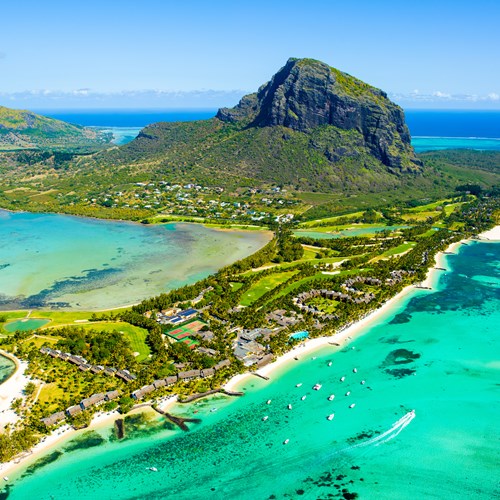
Mauritius, Mauritius
The island of Mauritius lies about 2,000 kilometres off the southeast coast of Africa in the Indian Ocean. As part of the Republic of Mauritius, which also includes the nearby islands of Rodrigues, Agaléga and St. Brandon, Mauritius has a long history of colonial conquests, disputed by the Netherlands, France and Great Britain. Having gained independence in 1968, the Republic of Mauritius retains its colourful diversity, remaining multi-ethnic, multi-religious, multicultural and multilingual, giving shape to a very own, unique environment.
Population:
1.2 Million
Currency:
1 Mauritian Rupee = 100 cents
Emergency Numbers:
Police and Ambulance: 999
Fire brigade: 995
Opening Hours:
In the main towns, normal opening hours last from 9:30am until 7:30pm on weekdays and Saturdays, whereas most of the shops are closed on Sundays and public holidays.
Newspapers:
Le Mauricien
Mauritius Times
L'Express
The Island

The island of Mauritius is the main island of the nation of Mauritius, located in the southwest of the Indian Ocean, and right between Rodrigues to the east and the French island of Réunion to the west. While the islands are divided into nine different districts, the capital Port Louis – a district in itself – is both the main industrial hub as well as a touristic hot spot.
Since gaining independence, Mauritius' politics have been influenced greatly by those of the Westminster parliament of Great Britain as the nation's last colonial master, and thus ranks highly for democracy, economic and political freedoms compared to many other African countries. While the island retained two languages forged during colonisation, French and English, an indigenous Mauritian Creole emerged as a blend of the colonial languages, as well as African and South Asian languages brought to and spoken on the island.
Much like its population and culture, the island's endemic flora and fauna, which is best known for the flightless bird breed called dodo, is beautifully diverse and colourful. However, being in acute danger of extinction, many of the landscapes were turned into national parks subject to strict rules of nature protection, in order to maintain the beauty of this unique island.
Do & See

Sights and adventures of Mauritius are as numerous and diverse as its natural treasures, and they are all spread around the whole island, from the very North with its beautiful beaches to the very South, known for terrific landscapes with cliffs and mountains – and while the East is adorned with emerald-coloured lagoons and authentic villages, the West undoubtedly captivates with its stunning nature parks and its great winds for water sport of all kinds.
Dining

The Mauritian cuisine is a blended one, and includes Creole, French, Chinese and Indian dishes that often are unique to the island itself: dhal puri (flatbread filled with bean curry), the millionaire's salad (palm hearts salad with seafood) and gateau piment (=chilli cake). As these influences already reveal, herbs and spices are widely used, but you will certainly find restaurants that lean towards more international (and less spicy) flavours.
Cafes

With its fair and beautiful surroundings, Mauritius invites you to savour a coffee and enjoy the view anywhere you prefer: in pure nature or in a lively neighbourhood. Take the chance and have a look around, since the cafes are as diverse as the island and its people at large.

